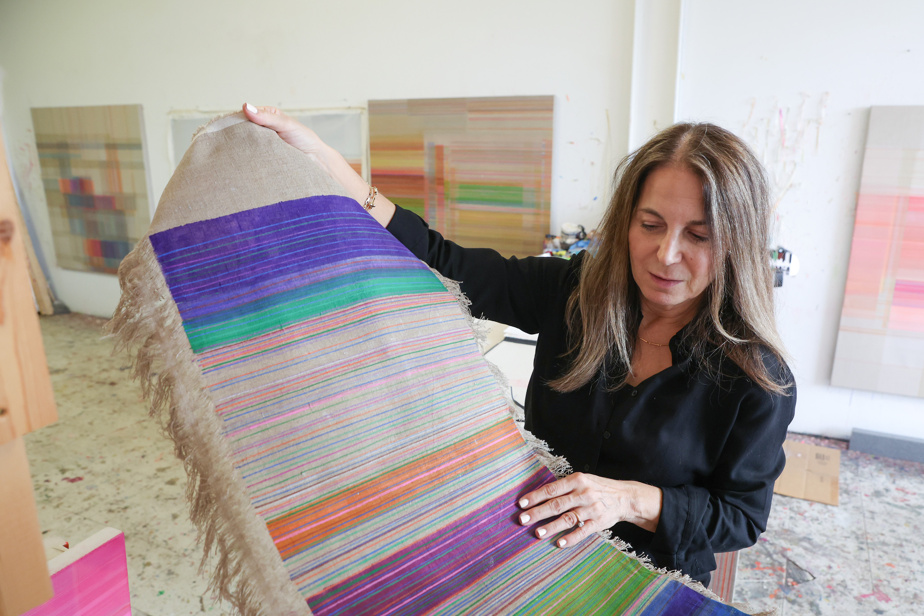Born in Montreal in 1965, Antonietta Grassi comes from a family of Italian immigrants who arrived in Quebec in the 1950s. Seamstresses, her mother and her aunts worked in the textile industry in Italy then in Montreal. A repetitive and mechanical work that left its mark on her. “Weaving and sewing were so present in my childhood that I acquired the pleasure of working with my hands. My father, who was a carpenter, also inspired me. »
However, it was design that she first studied, from 1984 to 1987, at Ryerson University in Toronto. Then, she returned to Montreal to work for the textile company Consoltex. She was responsible for determining fashionable colors. “It was trend research. Which shade to choose among the hundreds of blues? I went to New York and Paris to take the aesthetic pulse of the moment. »

PHOTO MARTIN CHAMBERLAND, THE PRESS
Antonietta Grassi
In the early 1990s, his need to create emerged. “I started taking art history courses at Concordia. I had one with [le peintre] John McEwen. It was fabulous. Then, I studied with Yves Gaucher, who became my mentor. He taught me to dialogue with painting. I realized that this is what I wanted to do. »

PHOTO MARTIN CHAMBERLAND, THE PRESS
A work by Antonietta Grassi
Aside from McEwen and Gaucher, Antonietta Grassi has been influenced by great artists such as Betty Goodwin, Mark Rothko, Agnes Martin, Paul-Émile Borduas, Roman Opałka and more recently Giorgio Morandi. She also benefited from the help and experience of the painter Brigitte Radecki and the curator Sylvie Lacerte, who is participating in her monograph which will be published next year.
All of these people have had an impact on her style, which stems, like the programming, from the Jacquard loom. But if his painting seems digital, it is indeed painstaking work. Lines and layers made with a brush. “It’s emotional work,” she says, arguing, like Riopelle, that her painting is not abstract. “These are fabrics, patterns, computer data, urban landscapes, passing trains, countryside images. These are flashes. »
